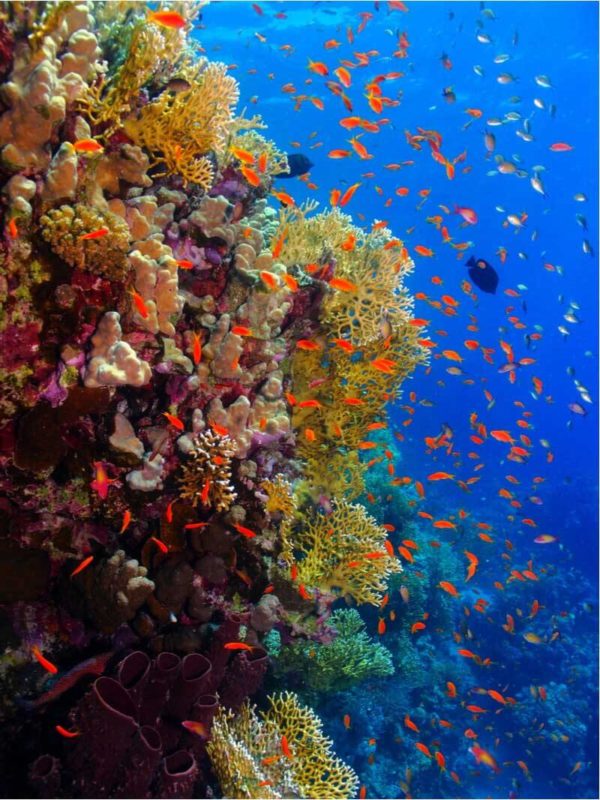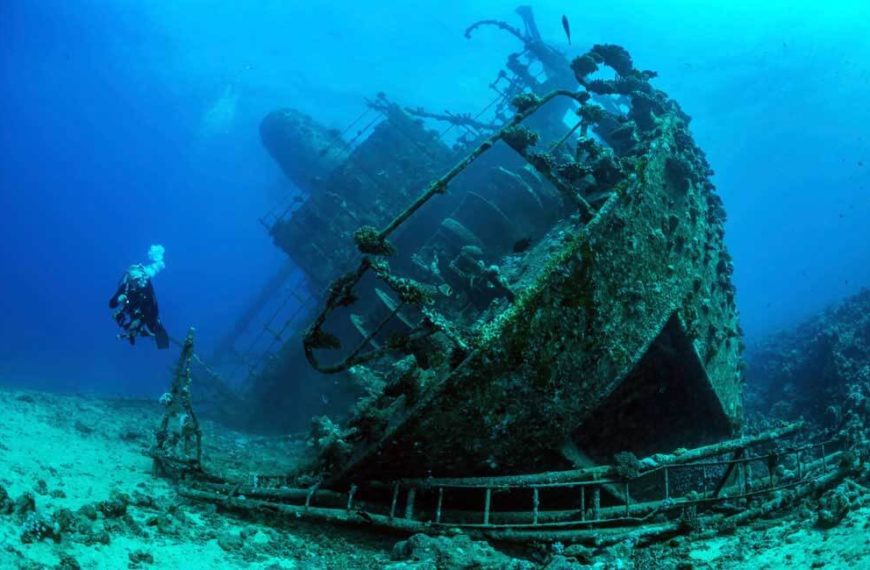

El Gouna • Hurghada • Safaga • El Quseir • Marsa Alam • Deep South
Hurghada, along with Sharm El Sheikh in Sinai, is where diving started in Egypt. In the 1980s it was a sleepy fishing village with a couple of hotels and one diving centre. Over the years it has steadily grown. Hurghada is now a bustling city with an equally vibrant dive industry. Many of the Red Sea liveaboards leave from its ports and hundreds of dayboats for divers and snorkellers are based there, servicing an ever-growing sprawl of hotels along its coast. New resorts such as El Gouna in the north and Sahl Hasheesh to the south have sprung up nearby and there has been a steady growth of tourism along the coast to outposts such as El Quseir, Port Ghalib, Marsa Alam and even further south towards the border with Sudan.
EL GOUNA

This purpose-built resort of 20 hotels, golf courses, artificial lagoons and shopping centres was opened in 1989 and is 20km north of Hurghada. It has evolved into a busy, if slightly bizarre, development with three marinas, an international school, plastic surgery and dental clinics and even a football stadium with a team that plays in Egypt’s top division. It is popular with divers as it is a great base to explore the wrecks and diving around nearby Abu Nuhas.
About a two-hour trip on a day boat out to the Strait of Gubal, the wrecks of Abu Nuhas are quite a haul but well worth it. The Carnatic, the Giannis D, the Chrisoula K and the Kimon M are just four of the ships that fell prey to the treacherous waters of the northern Red Sea. They are some of the most loved and dived wrecks in the Red Sea – all within easy recreational limits and each with its individual charms. Slightly further afield is the impressive Rosalie Moller, a must-see for technical divers.
El Gouna shares many sites to the south with its neighbour Hurghada including the beautiful horseshoe-shaped reef of Sha’ab El Erg with its spectacular coral gardens and Careless Reef. In the north, there is good wall and drift diving near the Siyul Islands and further up is Bluff Point with the wreck of the British freighter, the Ulysses.

HURGHADA

Most of the diving in Hurghada is concentrated on the dozens of dive sites around the Giftun islands and surrounding patch reefs. In the right conditions (flat calm), the exposed Careless Reef is a world-class dive. Considering the vast numbers who learn and improve their skills in the area, the reefs around the Giftun islands are in remarkably good condition. You can glide over forests of large gorgonians, explore coral gardens and drift along dramatic walls. Marine life is good with most of the Red Sea favourites in healthy abundance, not too many large pelagics.
This is a great place to learn to dive or to take further courses with a very competitive and highly professional training industry. Shop around and read the reviews – remember the cheapest is rarely the best. Many divers find a good centre and remain loyal for years. Trust personal recommendations.
One reason the reefs are coping with the stresses of large numbers of divers has been the work of the Hurghada Environmental Protection and Conservation Association (HEPCA) since it was formed by dive professional in 1992. Probably its greatest impact is the creation of what is now the world’s largest network of mooring buoys for dive boats which stretches 1,000km from Sinia down to the border with Sudan.
Trips are offered up to the wrecks of Abu Nuhas and even as far as the Thistlegorm – but these are long days on board with very early (before dawn) starts.
Nearer to home is the attractive reefs of Sha’ab El Erg. While the macro life is impressive, the real treat is the pods of bottlenose dolphins which after a hard night hunting offshore rest in the protected shallows of the area. This one of the best places in the world to reliably encounter dolphins while on scuba.

SAHL HASHEESH
This resort is purpose-built, like El Gouna, around a large, shallow bay 20km south of Hurghada – there are six large hotels and it is planned to double in size over the next five years. You can dive in the bay with its scattered coral outcrops – great for macro life and slow, leisurely shore dives taken at your pace and convenience. And the dive centres all offer dayboat diving out of Hurghada which is a 30-minute minibus drive away.
SAFAGA
This a major local terminal for the ferry to Saudi Arabia and its main business is the export of phosphates. While the town centre reflects its industrial focus, there is a growing cluster of attractive resort hotels at the northern end of the bay and its true charms are soon found underwater.

This up-and-coming dive destination is renowned for its excellent wall diving. Panorama Reef is a 90-minute boat ride north is the place for high-energy drift dives. Huge coral boulders and gorgonian forests on dramatic walls steeply descending to more than 200m.
Middle Reef boasts some stunning hard corals – including some gigantic brain corals. And Abu Kafan has the most spectacular walls crowded with marine life often including reef sharks and plenty of turtles.
EL QUSEIR

This ancient trading port is the next stop south and is about a two-hour road journey from Hurghada airport, or an hour up from Marsa Alam’s. There is a 16th Century fort to explore and a reasonable range of hotels. Most of the diving is shore-based with coral outcrops on shallow, sandy slopes. Plenty of pretty coral gardens with maze-like reefs and narrow passageways to explore. Keep an eye out for crocodilefish lurking on the patches of sand. This is a great spot to learn to dive – good dive centres and relatively quiet and shallow reefs.

There is some dayboat diving to be had out to hotspots such as Elphinstone, one of the highlights of most liveaboard itineraries to the south. You can also get out to the tragic wreck of the Salem Express where probably more than 700 people died (the exact death toll has never been established) returning from the Haj in Saudia Arabia in 2006. Many Egyptian crews for obvious reason would rather not visit the site.
MARSA ALAM & PORT GHALIB

Port Ghalib is the starting point for most of the liveaboard trips down to Egypt’s Deep South serviced by the airport in nearby Marsa Alam. It also has a growing number of new shore-based developments offering excellent dayboat and shore-based diving.
Elphinstone Reef sits between Masa Alam and Port Ghalib and if the weather conditions are suitable is easily accessed from the mainland. You can also visit Sataya Reef and, if it is not too busy, enjoy the spinner dolphins chilling in the shallow horseshoe-shaped reef.
Another treat that can be found munching on the seagrass in the quiet bays south of Port Ghalib are the resident dugongs. Again it can get crowded with boats of day-trippers.

FURTHER SOUTH

South of Marsa Alam, there is now a string of small resorts and desert camps offering diving reminiscent of the pioneering days of Red Sea diving.
Stretching down to Sudan is a network of barely explored reefs sitting just beyond the long run of fringing reefs which hug the coastline. Fury Shoal, Ras Banas and the glorious St John’s Reef have pristine coral, rarely seen schools of bumphead parrotfish, intricate swim-throughs and plenty of reef sharks.
While the facilities in some of the resorts in places such as Wadi Lahami and Hamata may be fairly basic, the diving is world-class.
Don’t miss the Second World War wreck at Abu Galawa. The drop-off at Maskour is as impressive as anything you would find on the offshore islands visited by liveaboards. And the caves and canyons of Claudia are an unforgettable dive.






